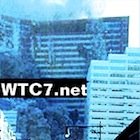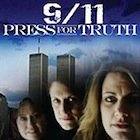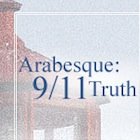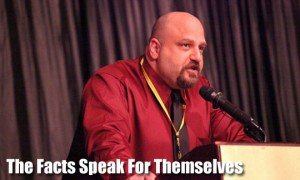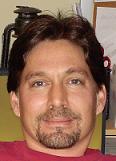
There were only three terrorist events in the United States in 2016 and only one resulted in deaths. That is not reason to celebrate, however, as it is clear that many Americans have not learned much about terrorism since 9/11. Moreover, the U.S. will see a new president that desperately needs to improve his public image and it should be considered how that was accomplished for George W. Bush. A review of U.S. terrorist events since last December is therefore worthwhile as is a look at one of the leading propagandists behind the nation’s terrorism narrative.
The one fatal terrorist incident in 2016 was the June shooting in an Orlando nightclub that ended in the deaths of 50 people. It was the deadliest act of terrorism in the United States since 9/11. The two other attacks were non-fatal but features of the attacks and the official accounts given reflected a familiar pattern in U.S terrorist events.
In Orlando, the suspect was quickly killed and the official account immediately attempted to blame the attacks on Islam. However, there were some alarming unanswered questions about the suspect including that he had posed in “selfies” wearing clothes with NYPD insignias. Additionally, Mateen worked for a security firm that operated like a special operations military outfit and the FBI had assessed his potential for terrorism on at least three separate occasions. Mateen’s employer, G4S, was linked to many other terrorist acts including 9/11.
Questions have persisted about the Orlando incident and it was later revealed that at least seven police officers showed up during the shooting but were ordered to stand down and leave the building as the attack proceeded. This was despite protocols developed after the Columbine attack that required officers to go after the shooter.
A few months passed before there were bombings in New York and New Jersey. On September 17th, a pipe bomb exploded in a trash can near the site of a 5K run event in Seaside Park, NJ. Three more pipe bombs were found scattered around the course. Later that day, a pressure cooker bomb exploded in a dumpster 85 miles away, in Manhattan. A few hours after that, another pressure cooker bomb was located a few blocks away. Several pipe bombs were found the following day—21 miles from Manhattan in a backpack on top of a municipal garbage can in Elizabeth, NJ.
The FBI said that an American citizen named Ahmad Rahimi was behind all ten of the bombs in the three different cities. Why the bombs were all placed in isolated trash containers, thereby causing limited damage, was never explained. The Bureau said that Rahimi was inspired by Osama bin Laden and Anwar al-Awlaki.
Incredibly, the suspect’s father had called the FBI two years earlier, claiming that his son was acting like a terrorist. This led the FBI to conduct a “review—checking its databases, contacting other agencies and conducting interviews” but nothing that “warranted further inquiry.”
The charges against Mr. Rahimi, who was shot seven times while being apprehended, are largely based on a personal journal authorities reportedly found on him. The journal, convenient for building the case to say the least, is said to detail plans for the bombs as well as the suspect’s terrorist ideology and his love for terrorists like Osama bin Laden. Mr. Rahimi has pleaded not guilty.
In November, what appeared to be an incident of mental illness was attributed to Islamic terrorism. An Ohio State University student—a Somalian who was a legal resident of the U.S.—drove his car into a crowd and then began stabbing people. Although the university said the suspect was only 18 years old, law enforcement officials said he was inspired by the terrorist propaganda of ISIL and Anwar Al-Awlaki. “ISIL” claimed responsibility despite there being no evidence of any contact between it and the accused.
Today, the fear instilled by the reporting of terrorist acts in the U.S. is hugely disproportionate to the actual risk presented. Only fear of government corruption is higher than fear of a domestic terrorist attack. The two fears are related, of course, and the pattern of terrorism in 2016 repeated that of 2015, further suggesting that these acts might be government sponsored.
Does the FBI continue to manufacture domestic terrorism as has been claimed in the past? Are operatives trained in special operations actually committing the terrorism while the FBI and professional propagandists concoct dubious official accounts?
An outstanding example is the San Bernardino shooting of December 2015. This was an attack in which all of the eyewitnesses were ignored in favor of an official account that still cannot be made to pass the red-face test. Furthermore, known terror propagandists have been involved in bolstering the official account.
Recently, the Los Angeles Times reported that, a year after the San Bernardino shooting, “federal officials acknowledge they still don’t have answers to some of the critical questions.” San Bernardino Police Chief Jarrod Burguan said, “We never established the motive. The best we can do is theorize.”
Theorize? That sounds familiar. Here’s a theory. The terror expert that the Times has quoted all year long is simply stoking the fear of terrorism, as he has done for decades, and distracting everyone from the facts of the case.
That expert, Brian Michael Jenkins, is himself a suspect in terrorism. In 1993, the editor of The Humanist called Jenkins “one of the architects of the contra war against Nicaragua—a terror war aimed primarily at the civilian population and infrastructure.”[1] A former special operations soldier and the man who designed the security system for the World Trade Center before it was destroyed, Jenkins is also named in the book Another Nineteen: Investigation Legitimate 9/11 Suspects. Apparently not distressed by the attention, Jenkins has posted a related article on his own website.
Immediately after the San Bernardino shooting, Jenkins began to be cited as the authority on the event in many media venues. The Guardian published Jenkins’ opinion piece that discussed visa programs, social media, and other risks in light of the shooting. The Atlantic employed him as its expert to explain how the internet can cause people to become “self-radicalized” (i.e. in the absence of any real associations with terrorism).
Jenkins continued to be the expert on the subject of the San Bernardino shooting and the new theory of self-radicalization. He appeared in articles for the LA Times (several times), the LA Daily News, local television reports, the Dallas News, the Associated Press, and others. In the most recent article by the LA Times, Jenkins described the two official suspects in the San Bernardino shooting. “They are essentially homegrown terrorists, self–radicalized and inspired by those overseas,” Jenkins said.
Of course, people who have followed the news in detail still wonder about facts that contradict the official San Bernardino account. For example, the evidence suggests that the attackers were three white men who appeared to be special operations soldiers.
At the time of the attack, a Los Angeles television station stated: “Police looking for 3 white males dressed in military gear.” The only eyewitness to the shootings said the perpetrators were three tall, athletic, white men in combat-style gear. The witnesses to the getaway said they saw three men in black masks fleeing the scene with rifles in hand. Another said it was three white men in military gear. The attackers got into a black SUV with tinted windows and “calmly” left the scene.
It is certain that a black SUV was shot up badly later in the day. However, no convincing evidence was ever produced showing how the accused were driving or shooting from the SUV. Moreover, the attorney representing the family said the accused appear to have been handcuffed and lying face down in the vehicle when found.
It was reported that the FBI was getting resistance from Apple in unlocking the suspect’s phone, causing a challenge to privacy rights. The truth was later revealed to be that the FBI had somehow reset the suspect’s iPhone password, making it impossible for Apple to access the phone’s content via cloud. Additionally, the suspect’s computer hard drive went missing. In other words, the FBI continued to the remaining evidence.
Nonetheless, the media frenzy in support of the official account soon became an entrenched myth. Even as the New York Times retracted its reporting on the subject and the Washington Post admitted that American law enforcement officials were “famous for feeding contradictory and unfounded information to the media,” the myth continued to go unchallenged.
On the 15th anniversary of 9/11, Brian Michael Jenkins co-authored a lead piece for The Atlantic that asked, How Much Really Changed About Terrorism on 9/11? His fellow contributors were Bruce Hoffman and Martha Crenshaw, terror propagandists associated with those of Cercle Pinay and the Washington Institute for the Study of Conflict. The article discussed how to predict who would become a terrorist and exaggerated the power and influence of “terrorist groups.” The authors argue that the only things that have really changed since 9/11 are that the stakes are higher, the terrorist are more capable, and we have not learned much.
It is true that many people have not learned much about terrorism since 9/11. That’s partly because the public is continually misinformed about every terrorist act and partly because people willfully ignore the evidence they do encounter. As terror propagandists and suspected terrorists continue to control the narrative, the future might provide more serious examples of this absurd and dangerous state of affairs.
[1] Gerry O’Sullivan, Boom!, The Humanist, May 1993.
Kevin Ryan blogs at Dig Within.














